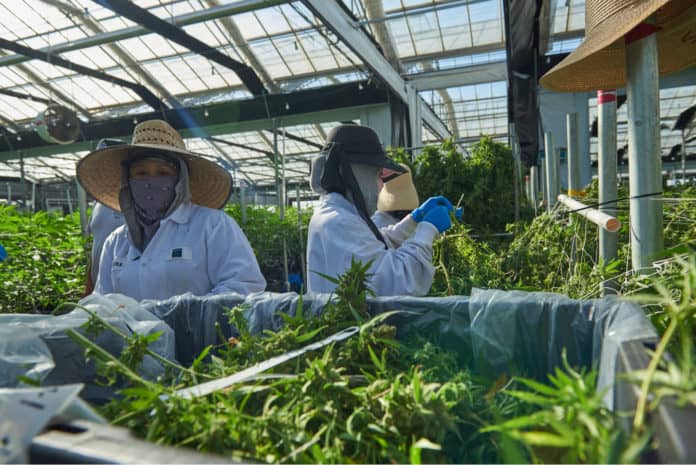SANTA BARBARA COUNTY, Calif. – Although cannabis was legalized in California after voters approved Prop. 64, some local governments are struggling to figure out what kind of industry they want, causing confusion over cannabis in Santa Barbara and many other places.
Santa Barbara County allows recreational cannabis but its sheriff’s office has been aggressively targeting many unsanctioned grow operations. Last month, the Santa Barbara County Sheriff’s Cannabis Compliance Team seized over twenty tons of cannabis products in a raid near Buellton, California. Over sixty acres were being used to produce cannabis flower on a farm not operating in compliance, according to the sheriff’s office.
Authorities are overwhelmed trying to keep tabs on growers in Santa Barbara County.
“We anticipated that there would be a large number of purely illegal grows but we did not really understand how large the problem was,” said John Savrnoch Santa Barbara County chief deputy district attorney.
Santa Barbara County law enforcement is exhausting quite a bit of resources to pursue grow operations.
“If we are not on an actual eradication, we are in the case preparation for the eradication of an illegal grow,” said Lieutenant Greg Sanders, Santa Barbara County Compliance Team supervisor.
Sanders and his team rely on odor complaints to obtain search warrants and raid grows. With a number of complaints, the compliance team is in a constant state of investigation.
Over 65 percent of voters approved of Prop. 64 in Santa Barbara County. However, no limit was placed on the amount of land that could be used to grow cannabis outdoors. Santa Barbara County growers have received the highest number of temporary grow licenses in all of California. Most of these permits will not have the opportunity to transition into permanent licenses and many growers may try to keep operations going, especially as regulatory confusion continues.
Despite the high number of unsanctioned grows, Santa Barbara County still holds about one-third of all licenses to grow cannabis in California. This is creating a bit of a culture clash as may longtime residents feel they are being invaded by outside opportunists only concerned with profits and not preserving Santa Barbara’s way of life.
However, as much as some residents may resent the industry, Santa Barbara County may need the tax revenues and economic benefit of the cannabis industry. Some analysts estimate cannabis injects $2 billion into the local economy.
The situation has created an odd dynamic for law enforcement. Some have accused the sheriff’s office of not respecting legal cannabis and being overzealous in raids. A lot of time and money is used to investigate and shut down grow operations, and yet, the vast majority of these cases are not even considered felony crimes.
“Most of these cases regardless of size are by law misdemeanors,” Savrnoch said. “They are misdemeanors unless certain factors are met such as if the person has serious or violent felonies, if they commit multiple offenses of the same crime, or if there is an intent to distribute marijuana.”
Savrnoch is not entirely sure what can be done to change the situation.
“I don’t know if it’s a matter of stricter punishment or clearer punishment or stricter licensing but there needs to be something done to discourage people,” Savrnoch said.
One thing seems clear for sure. Santa Barbara is likely to continue its rocky relationship between law enforcement, residents, and the cannabis industry.











